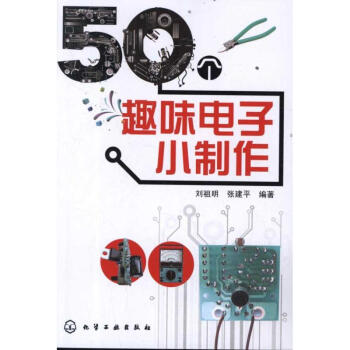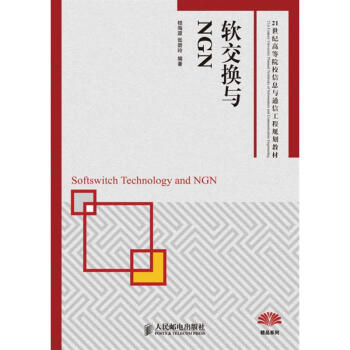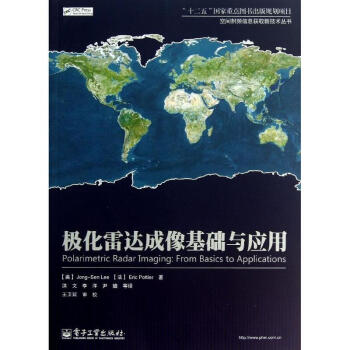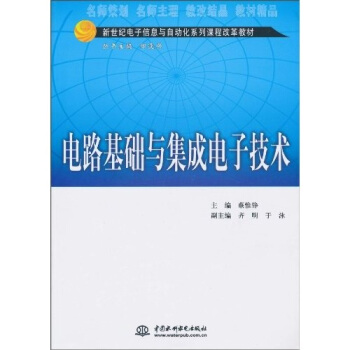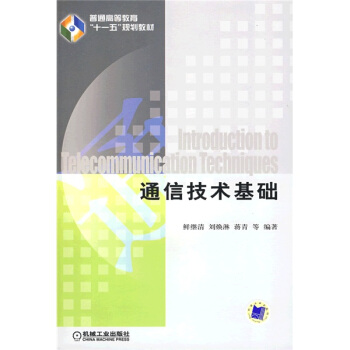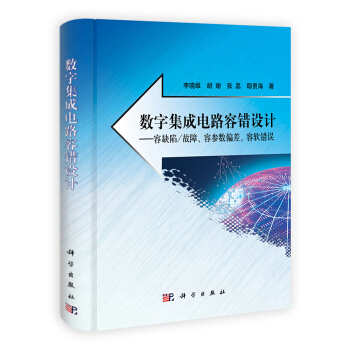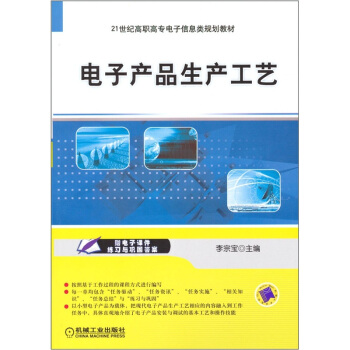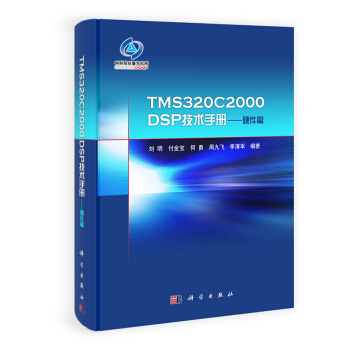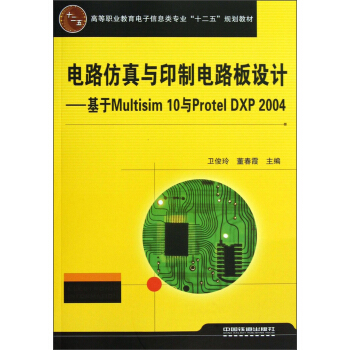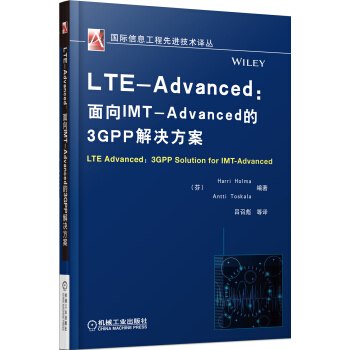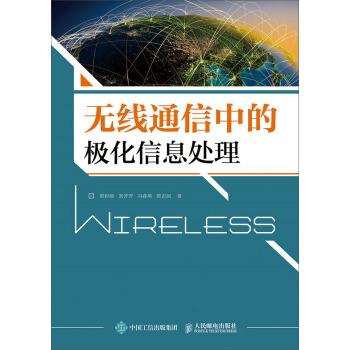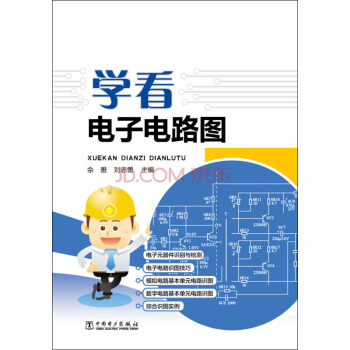![多点协作通信系统:理论与应用(英文版) [Multi-point Cooperative Communication Systems:Theory and Applications]](https://pic.tinynews.org/11414114/rBEhWFMpUHwIAAAAAALWCOXGkuYAAKWGQKng6UAAtYg583.jpg)
多点协作通信系统:理论与应用(英文版) [Multi-point Cooperative Communication Systems:Theory and Applications] pdf epub mobi txt 电子书 下载 2025
- Cooperative Communication
- Wireless Communication
- MIMO
- Relaying
- Network Coding
- Signal Processing
- Information Theory
- Wireless Networks
- Communication Systems
- 5G/6G

具体描述
编辑推荐
《多点协作通信系统:理论与应用(英文版)》对多点协作通信技术中的关键问题进行了深入研究和论述,分理论研究与实际应用两部分。《多点协作通信系统:理论与应用(英文版)》将对于国内外多点协作通信技术领域的最新研究动态进行系统性阐述与分析,并对感知干扰情况下的多点协作通信中的关键技术进行研究。内容简介
现代无线移动通信系统具有两个显著的特点,一是宽带高速率,二是移动互联,这对无线移动通信技术提出了许多挑战。多点协作通信技术是应对这些挑战的最有效技术之一,因而成为了现代移动通信领域的研究热点。《多点协作通信系统:理论与应用(英文版)》对多点协作通信技术中的关键问题进行了深入研究和论述,分理论研究与实际应用两部分。其中,第二章是全书的灵魂,将国内外在多点协作通信技术领域的研究动态分为八类进行系统性的阐述与分析,并对感知干扰情况下的多点协作通信中的关键技术进行了研究,属于第四代无线移动通信系统以及未来无线移动通信系统的范畴。
《多点协作通信系统:理论与应用(英文版)》论述全面,条理清楚,含有大量理论分析和计算机仿真结果,具有重要的理论意义和应用前景,对该领域的学者和学生具有较高的参考价值。
目录
Chapter 1 Introduction1.1 A Brief History of the International Mobile
Telecommunication Systems
1.2 The Future of Wireless Communication: The Enhanced
4G Network
1.2.1 Challenges in the Next Decade
1.2.2 Development Requirements
1.2.3 Key Technologies
1.3 Background of Multipoint Cooperative Communication
1.4 Scope of This Book
1.5 Book Outline
1.6 Conclusion
References
Chapter 2 Related Work
2.1 Fundamentals of Wireless Digital Communication
2.1.1 What Form of Communication
2.1.2 How to Communicate
2.1.3 When/Where to Communicate
2.2 OFDM Technology
2.3 MIMO Technology
2.3.1 Capacity of a MIMO System
2.3.2 Space-Time Block Codes
2.3.3 Antenna Array Gain
2.3.4 MIMO-OFDM Technology
2.4 Relay Technology
2.4.1 Relaying Protocols
2.4.2 One-Way MIMO Relay Technology
2.4.3 Two-Way MIMO Relay Technology
2.5 MultiuserMIMO Technology
2.5.1 System Model
2.5.2 MUMAC Model
2.5.3 MU BC Model
2.5.4 Duality of the MAC and BC Capacity Regions
2.5.5 MU MIMO Schemes in Practical Systems
2.6 CSI Feedback Technology
2.7 Survey of Multipoint Cooperative Communication Technologies
2.7.1 The First Category of Multipoint Cooperative
Communication
2.7.2 The Second Category of Multipoint Cooperative
Communication
2.7.3 The Third Category of Multipoint Cooperative
Commumcation
2.7.4 The Fourth Category of Multipoint Cooperative
Communication
2.7.5 The Fifth Category of Multipoint Cooperative
Communication
2.7.6 The Sixth Category of Multipoint Cooperative
Communication
2.7.7 The Seventh Category of Multipoint Cooperative
Commumcation
2.7.8 The Eighth Category of Multipoint Cooperative
Commumcation
2.8 Conclusion
References
Chapter 3 The Sixth Category: Antenna Selection Technologies
3.1 Introduction
3.2 System Model and Existing Technologies
3.2.1 System Model
3.2.2 Existing Technologies
3.3 Greedy Antenna Selection Algorithms
3.3.1 Capacity Maximization for the System
with Double ZF Processing
3.3.2 Capacity Maximization for System with General
Processing
3.3.3 MSE Minimization for the System with General
Processing
3.4 Simulation and Analysis
3.4.1 The Proposed DZF-GCM Algorithm
3.4.2 The Proposed GCM Algorithm
3.4.3 The Proposed GMM Algorithm
3.5 Conclusion
References
Chapter 4 The Seventh Category: Advanced Interference
Coordination
4.1 Introduction
4.2 System Model and Existing Technologies
4.2.1 System Model
4.2.2 Existing Technologies
4.3 Advanced Interference Coordination Scheme
4.3.1 Overall Description of the Proposed Scheme
4.3.2 Implementation Details of the Proposed Scheme
4.4 Simulation and Analysis
4.4.1 Methodology of the System-Level Simulation
4.4.2 Simulation Parameters
4.4.3 Implementation Details in the Simulation
4.4.4 Numerical Results and Discussions
4.5 Conclusion
References
Chapter 5 The Eighth Category: Joint Precoding with Ideal
Backhaul
5.1 Introduction
5.2 System Model and Existing Technologies
5.2.1 System Model
5.2.2 Existing Technologies
5.3 Enhanced Single-Frequency Network Precoding Scheme
5.3.1 The Proposed AS-SFNP Scheme
5.3.2 Analytical Results for the Sing!e-Antenna UE
5.4 Simulation and Analysis
5.5 Conclusion
References
Chapter 6 The Eighth Category: Sequential and Incremental
Precoding with Nonideal Backhaul
6.1 Introduction
6.2 System Model and Existing Technologies
6.2.1 System Model
6.2.2 Existing Technologies
6.3 Sequential and Incremental Precoding Scheme
6.3.1 Precoder Design for the Two-BS JT Network
6.3.2 Extension to the Multi-BS Scenario
6.3.3 The SIP Scheme with Codebook-based Feedback
6.3.4 Extension to the Multi-UE Scenario
6.4 Simulation and Analysis
6.4.1 Convergence of the SIP Scheme
6.4.2 Performance of the Mean of the Maximum
of Sub-stream MSE
6.4.3 Performance of Average BER
6.4.4 Performance of the Extended SIP Scheme
6.4.5 Performance with Codebook-basedFeedback
6.5 Conclusion
References
Chapter 7 Coordinated Multipoint System
7.1 Introduction
7.2 Standardization Progress
7.2.1 The Failed Campaign of CoMP in LTE Release 10
7.2.2 CSI Feedback for Single-Cell MIMO in LTE Release
8/9/10
7.2.3 The Renewed Campaign of CoMP in LTE Release 11
7.3 CoMP Schemes in LTE Release 11
7.3.1 Downlink CoMP Transmission Schemes
7.3.2 UplinkCoMP Reception Schemes
7.4 Specification Works
7.5 Simulation and Analysis
7.6 Conclusion
References
Chapter 8 Common Feedback Framework for Downlink CoMP
8.1 Introduction ~
8.2 Candidates of Common Feedback Framework
8.2.1 CFF Option Matrix
8.2.2 Discussions on CFF Options
8.2.3 Co-phaseVersus AggregatedCQI
8.3 Performance Evaluation
8.3.1 Simulation Description
8.3.2 Performance Comparison
8.4 The Final Winner of CFF
8.5 Conclusion
References
Chapter 9 Conclusion
9.1 Key Points of This Book
9.2 Toward the Future
9.3 Conclusion
References
前言/序言
用户评价
这本书的书名,《多点协作通信系统:理论与应用》(英文版),立刻吸引了我。我一直对无线通信的最新进展充满好奇,而“多点协作通信”这个概念听起来就蕴含着巨大的潜力和创新。我对于它如何将多个通信节点的力量汇聚在一起,从而克服传统单点通信的局限性感到非常着迷。想象一下,在信号不佳的区域,或者需要极高吞吐量和可靠性的场景下,如果通信设备能够像一支训练有素的团队一样协同工作,那将是多么令人兴奋的革命。这本书的书名暗示了它将深入探讨协作通信的内在机制,从基本的理论原理到实际的应用落地,这正是我一直以来想要深入了解的。我期待着它能为我揭示隐藏在背后的复杂数学模型、算法设计以及如何将这些理论转化为现实世界中可用的技术。尤其是在5G乃至未来6G通信的背景下,协作通信的重要性愈发凸显,本书的出现恰逢其时,我相信它将成为我探索这一前沿领域的宝贵指南。
评分《多点协作通信系统:理论与应用》(英文版)这个书名,如同一个引人入胜的标题,让我对其中蕴含的知识充满了好奇。作为一名对无线通信技术充满热情的学生,我一直在寻找能够拓展我视野、深化我理解的教材。这本书的名字本身就暗示着它将全面地覆盖从理论构建到实际落地的全过程。我希望这本书能够清晰地阐述协作通信的优势,比如如何通过多用户联合处理来提高整体的数据速率和公平性,或者如何利用协同中继来扩展网络的覆盖范围和消除信号盲区。我也会关注它是否会对各种协作策略进行分类和比较,例如集中式协作与分布式协作,以及它们各自的优缺点。如果书中能够提供一些计算示例或仿真结果,来量化协作通信所带来的性能提升,那将对我理解这些抽象概念非常有帮助。
评分当我看到《多点协作通信系统:理论与应用》(英文版)这个书名时,我的第一反应是它可能会为解决当下许多棘手的通信难题提供新的思路。我经常在想,我们如何才能更有效地利用日益宝贵的无线频谱资源?如何才能在复杂多变的无线环境中,保证通信的稳定和高效?“多点协作”这个词组,似乎就指向了答案。我猜想这本书会深入剖析不同类型的协作方案,比如中继通信、分布式 MIMO、以及更高级的联合通信与感知等。它可能会详细介绍这些方案背后的数学原理,例如信道估计、预编码、信号检测等关键技术,并且会用清晰的图表和公式来辅助说明。我特别期待的是,书中是否会探讨协作通信在异构网络环境下的表现,以及如何实现不同类型节点之间的无缝协作。如果它能提供一些关于仿真工具和实验平台的信息,那就更完美了。
评分这本书的名称,《多点协作通信系统:理论与应用》,听起来就充满了前瞻性和解决问题的能力。我一直在关注通信技术的发展趋势,特别是那些能够显著提升系统性能、降低能耗、并且提高用户体验的创新技术。协作通信的概念,正是其中一颗冉冉升起的新星。我非常想知道,这本书会如何系统地梳理协作通信的演进历程,以及它与传统通信方式在核心思想上的区别。我期望它能够从信息论、随机过程、最优化理论等多个角度,深入浅出地阐述协作通信的理论基础。此外,对于“应用”部分的具体内容,我也充满了期待。书中是否会介绍一些正在研发或已实现商业化的协作通信系统?它们在实际部署中遇到了哪些挑战?又通过哪些创新的方法克服了这些挑战?我希望这本书能够提供一些“干货”,而不是流于表面。
评分作为一名在通信行业摸爬滚打多年的工程师,我深知理论的扎实与实践的结合是多么重要。《多点协作通信系统:理论与应用》(英文版)这个标题,让我看到了理论深度和应用广度的完美融合。我非常关注这本书是否能提供清晰、严谨的理论框架,去解释协作通信是如何通过信息共享、信号重构等方式来提升频谱效率、降低干扰、增强鲁棒性的。同时,我也渴望了解书中是否会列举一些具体的应用案例,比如在物联网、车联网、无人机通信、甚至卫星通信等领域,协作通信是如何发挥其独特优势的。一个好的技术书籍,不应该仅仅停留在抽象的概念层面,更应该能够指导读者如何去设计、实现和优化实际的系统。因此,我非常期待这本书能够提供一些工程上的思考,关于系统设计中的权衡、算法的复杂度以及部署中的挑战,能够帮助我将学到的理论知识有效地运用到实际工作中。
相关图书
本站所有内容均为互联网搜索引擎提供的公开搜索信息,本站不存储任何数据与内容,任何内容与数据均与本站无关,如有需要请联系相关搜索引擎包括但不限于百度,google,bing,sogou 等
© 2025 book.idnshop.cc All Rights Reserved. 静思书屋 版权所有


